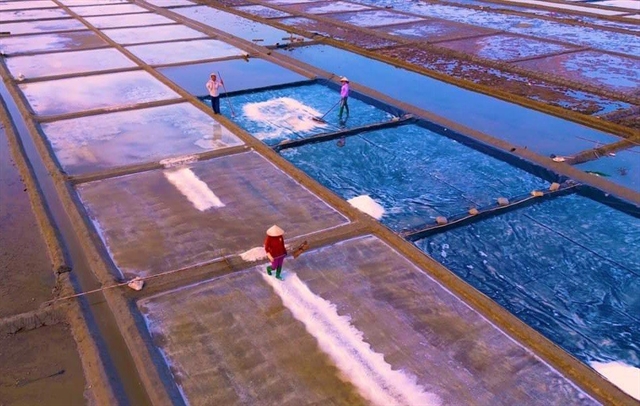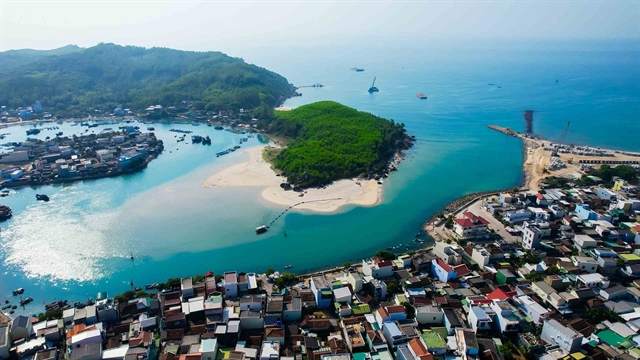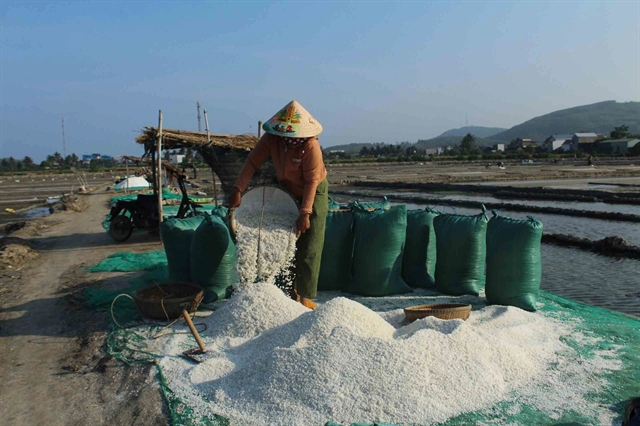 Life & Style
Life & Style

 |
| Sa Huỳnh’s salt-making tradition was officially recognised as a National Intangible Cultural Heritage on December 10, 2024. Photo thanhnien.vn |
Despite many ups and downs, the salt farmers of Sa Huỳnh in the south central province of Quảng Ngãi remain committed to preserving the hard-earned craft passed down by their ancestors.
Recognising its cultural and historical significance, the Ministry of Culture, Sports and Tourism officially designated Sa Huỳnh’s salt-making tradition as a National Intangible Cultural Heritage on December 10, 2024.
According to Đoàn Ngọc Khôi, PhD, an expert on Sa Huỳnh culture, the Sa Huỳnh salt fields are an inseparable part of the nationally significant Sa Huỳnh cultural site.
The craft has been a community-based tradition, passed down through generations.
Unlike many other ancient salt villages in Quảng Ngãi and elsewhere, where people have abandoned salt farming for more lucrative trades, Sa Huỳnh’s salt farmers persist despite the hardships.
Historical records from the Quảng Ngãi Museum indicate that Sa Huỳnh has undergone various name changes throughout history.
Salt production in the area began with migrants from renowned salt-producing regions such as the north central provinces of Nghệ An and Thanh Hóa.
During the Nguyễn Lords’ era, Đàng Trong (referring to Central and Southern Việt Nam, including modern-day Huế, Đà Nẵng, Quảng Ngãi, and expanding down into the Mekong Delta) imposed various taxes, including a salt tax collected by local authorities.
In Đức Phổ, tax collection stations were established in Mỹ Á in Phổ Quang and Cẩm Khê Lagoon in An Khê Lagoon, Phổ Khánh.
Sa Huỳnh’s salt production is also documented in Đồng Khánh Địa Dư Chí (The Geographic Records of Đồng Khánh) which refers to the village as Tân Diêm, the largest salt producer in Quảng Ngãi at the time, exporting around 7,000 tonnes annually, including shipments to Hong Kong and the highland regions.
Under French colonial rule, Sa Huỳnh’s salt farmers endured economic exploitation, with salt being bought at extremely low prices and resold at exorbitant rates.
The French also built the North-South Railway, including a station in Sa Huỳnh, to facilitate salt transport.
Despite the twists and turns of history, the people of Sa Huỳnh have never forgotten their craft's origins.
Today, in Tân Diêm (Phổ Thạnh), a temple dedicated to the salt-making ancestors stands, where farmers continue to offer incense on special occasions such as the 1st and 15th days of each lunar month.
 |
| Currently, the Sa Huỳnh salt fields have annual salt production reaching 6,500-7,000 tonnes. Photo thanhnien.vn |
Traditional salt making
A well-known folk verse from Sa Huỳnh describes the hard labour of salt farming, which goes "Salt farmers work tirelessly, seeking shade when cool, enduring the sun when hot!".
The traditional salt-making process follows the ancient method of sun-drying seawater in coastal areas. Farmers capture seawater in shallow salterns where the sun's heat and wind evaporate most of the water. The concentrated brine precipitates the salt which is then harvested by simple tools.
Nguyễn Văn Út, a salt farmer from Long Thạnh, describes how they construct salt fields.
They build seawalls, carefully section off 200 square metre pans, and lay down a layer of sand that has been soaked in seawater and dried, ensuring purer, whiter salt.
This preparation alone takes about two months before seawater is introduced into the pans.
Salt farmers work primarily at midday when the sun's heat is highest, allowing for faster evaporation.
Farmers note that the hotter the sun, the whiter and larger the salt crystals become. Unlike modern cement or tarp-based methods, salt produced on traditional soil surfaces retains a richer flavour.
Currently, the Sa Huỳnh salt fields span approximately 106 hectares, involving over 560 households across three neighbourhoods, including Tân Diêm, Long Thạnh and Thạnh Đức.
Annual salt production reaches 6,500-7,000 tonnes, with various products such as raw salt, roasted salt, pepper salt, bamboo salt, flower salt, and fine salt.
However, prices fluctuate dramatically, with flower salt, or the best one, sometimes selling for only VNĐ20,000/kg (80 US cents/kg) and fine salt for as little as VNĐ500/kg.
 |
| It is crucial to protect Sa Huỳnh’s salt-making heritage. Photo thanhnien.vn |
Preserving a cultural legacy
Khôi emphasises the need to protect Sa Huỳnh’s salt-making craft by maintaining its ecological and cultural integrity against urbanisation and environmental threats.
Plans are underway in Quảng Ngãi to preserve the ancestral shrine and traditional ceremonies, including the annual salt-making ancestor festival on the 16th of the seventh lunar month.
As part of these preservation efforts, traditional performing arts such as hát tuồng (classical drama), folk art performances historically associated with the salt-making community, are being revived to honour this enduring cultural legacy. VNS




